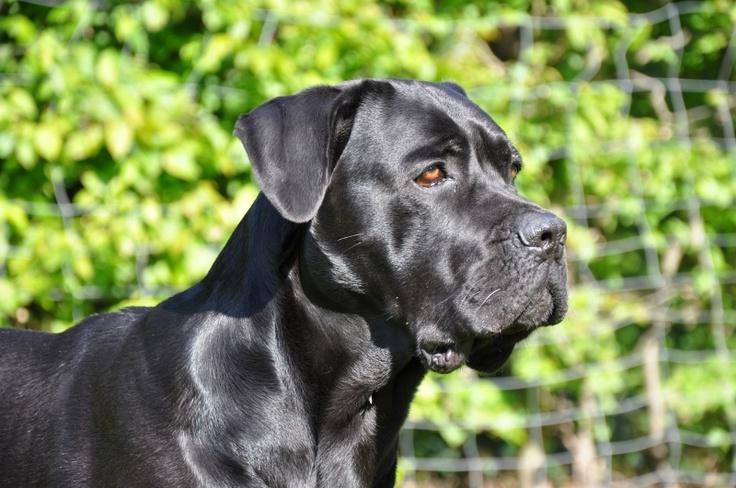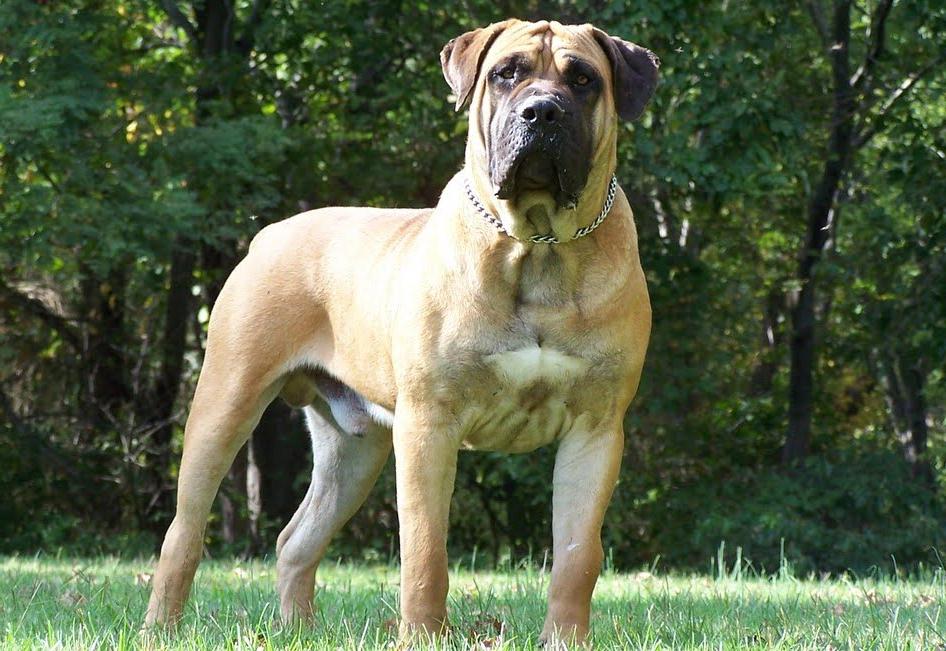Imagine a dog with a powerful build, a loyal heart, and a history as rich as its character. That’s the Molosser type dog for you. These dogs are known for their robust physique and protective nature, making them both formidable guardians and affectionate companions. This article aims to delve into the unique characteristics, fascinating history, and essential care tips for these remarkable breeds.
Molosser dogs trace their origins back to ancient Greece, where they were bred for their strength and courage. Over centuries, they spread across Europe, adapting to various roles from herding to guarding. Understanding their past helps us appreciate their present, and guides us in providing the best care for these noble dogs.
Early Development and Historical Significance of Molosser Breeds

Early Development of Molosser Breeds
Molosser breeds have a storied past that dates back to ancient Greece. These dogs were initially bred for their impressive strength and unwavering courage. Their robust build made them ideal for various demanding roles, from herding livestock to guarding properties. As they spread across Europe, their adaptability allowed them to thrive in different environments and tasks.
Role in Ancient and Modern Societies
In ancient societies, Molossers were more than just working dogs; they were symbols of power and protection. Today, their roles have evolved, but their core traits remain. They continue to serve as loyal guardians and cherished family members, proving their versatility and enduring appeal.
Key Historical Figures and Regions
Regions like Epirus in Greece and the Roman Empire played pivotal roles in the development of Molosser breeds. Historical figures, including Alexander the Great, are believed to have utilised these dogs in military campaigns, showcasing their strategic importance.
Physical Characteristics
Molosser breeds are easily recognised by their muscular build, broad heads, and strong jaws. Their imposing presence is balanced by a gentle and affectionate nature, making them both formidable protectors and loving companions.
Appearance and Unique Physical Traits
Molosser dogs are known for their impressive size and striking appearance. They typically have a muscular build, broad heads, and strong jaws, which give them a commanding presence. Their coats can vary in colour, ranging from fawn and brindle to black and white, often with distinctive markings that add to their unique look. These physical traits not only contribute to their aesthetic appeal but also to their historical roles as protectors and working dogs.
Temperament and Behaviour
Despite their formidable appearance, Molosser dogs are known for their gentle and affectionate nature. They are incredibly loyal and protective, making them excellent family companions. These dogs are often calm and composed, but they can be quite playful and energetic when the situation calls for it. Their intelligence and eagerness to please make them highly trainable, although they do require consistent and firm guidance. With the right approach, Molossers can be both loving pets and vigilant guardians.
Personality Traits and Suitability as Family Pets

Typical Personality Traits
Molosser dogs are renowned for their loyalty, protectiveness, and intelligence. These traits make them exceptional companions and guardians. Their loyalty is unmatched, often forming strong bonds with their families. This protective nature means they are always on the lookout, ensuring the safety of their loved ones. Their intelligence shines through in their ability to learn commands and adapt to various situations.
Suitability as Family Pets and Working Dogs
These dogs are well-suited for families, offering both companionship and security. Their history as working dogs means they thrive when given tasks, whether it’s guarding the home or participating in dog sports. Their versatility makes them ideal for both family life and work environments.
Interaction with Children and Other Animals
Molosser breeds are generally good with children, displaying patience and gentleness. However, supervision is always recommended, especially with younger kids. They can coexist with other animals, but early socialisation is key to ensuring harmonious relationships.
Training and Exercise Needs
Training a Molosser requires consistency and a firm yet gentle approach. Their intelligence makes them quick learners, but they need clear boundaries. Regular exercise is essential to keep them healthy and happy, with activities like walks, playtime, and mental stimulation being beneficial.
Training, Exercise, and Health of Molosser Dogs

Importance of Early Training and Socialisation
Getting a head start on training and socialisation is crucial for Molosser dogs. These breeds are naturally protective, so introducing them to different people, animals, and environments early on helps them grow into well-rounded adults. This early exposure reduces the risk of behavioural issues and ensures they are comfortable in various situations.
Recommended Training Techniques
When it comes to training, consistency is key. Molossers respond well to positive reinforcement techniques, such as treats and praise. It’s important to establish clear boundaries and maintain a firm yet gentle approach. Patience and persistence will pay off, as these intelligent dogs are eager to learn and please.
Daily Exercise Requirements and Activities They Enjoy
Regular exercise is a must for Molosser dogs to keep them fit and content. They enjoy activities like long walks, play sessions, and even agility training. Mental stimulation is just as important, so consider puzzle toys or obedience training to keep their minds sharp.
Health and Lifespan
Molosser breeds are generally healthy, but like all dogs, they can be prone to certain genetic conditions. Regular vet check-ups and a balanced diet are essential for maintaining their health. With proper care, these dogs can enjoy a lifespan of 10 to 12 years, providing many years of companionship and loyalty.
Health and Care of Molosser Dogs

Common Health Issues
Molosser breeds, with their strong builds, can be prone to certain health issues. Hip dysplasia and heart conditions are common concerns, so regular vet visits are crucial. Keeping an eye on their weight is also important, as obesity can exacerbate these problems.
Average Lifespan and Health Tips
With proper care, Molossers can live between 10 to 12 years. A balanced diet, regular exercise, and mental stimulation are key to a long, healthy life. These dogs thrive on routine, so maintaining a consistent schedule for feeding and exercise is beneficial.
Preventative Care Recommendations
Preventative care is essential for Molosser breeds. Regular vaccinations, flea and tick prevention, and dental care should be part of their routine. Early detection of potential health issues can make a significant difference, so don’t skip those vet check-ups.
Grooming and Maintenance
Grooming needs vary among Molosser breeds, but regular brushing helps keep their coats healthy and reduces shedding. Bathing should be done as needed, and don’t forget to check their ears and trim their nails regularly. A little maintenance goes a long way in keeping them looking and feeling their best.
Coat Care and Grooming for Molosser Dogs

Coat Care and Grooming Routines
Molosser dogs, with their diverse coat types, require regular grooming to keep them looking their best. A weekly brush is usually enough for most breeds, helping to remove loose hair and prevent matting. For those with longer coats, more frequent brushing might be necessary. Regular grooming not only keeps their coat healthy but also provides an opportunity to check for any skin issues or parasites.
Shedding and Seasonal Grooming Tips
Shedding is a natural process for Molosser dogs, and it can increase during seasonal changes. During these times, more frequent brushing can help manage the extra hair. A good quality brush suited to their coat type can make a big difference. Bathing should be done as needed, but not too often, as it can strip the coat of natural oils.
Diet and Nutrition
A balanced diet is crucial for the health and vitality of Molosser dogs. High-quality dog food that meets their nutritional needs is essential. These breeds can be prone to weight gain, so portion control is important. Including a mix of proteins, fats, and carbohydrates, along with essential vitamins and minerals, will support their overall health. Always ensure they have access to fresh water.
Nutritional Needs and Feeding Guidelines for Molosser Dogs

Nutritional Needs for Optimal Health
Molosser dogs thrive on a diet rich in high-quality proteins, healthy fats, and essential vitamins and minerals. These nutrients support their muscular build and overall vitality. Look for dog foods that list meat as the first ingredient, ensuring they get the protein they need for energy and muscle maintenance.
Foods to Include and Avoid
Include lean meats, fish, and whole grains in their diet. Vegetables like carrots and spinach can provide additional nutrients. Avoid foods high in fillers, artificial preservatives, and excessive fats, as these can lead to weight gain and health issues.
Feeding Schedules and Portion Recommendations
Establish a consistent feeding schedule, typically twice a day, to maintain their energy levels and prevent overeating. Portion sizes should be based on their age, weight, and activity level. Consult your vet for specific recommendations tailored to your dog’s needs.
Fun Facts and Trivia
Did you know that Molosser dogs were once used by the Romans in battle? Their strength and loyalty made them invaluable companions on the battlefield. Today, they continue to impress with their versatility and adaptability in various roles.
Interesting Tidbits and Famous Molosser Dogs
Interesting Tidbits about Molosser Breeds
Molosser breeds are a fascinating group of dogs with a rich history. Did you know that these dogs were originally bred for their strength and courage, making them ideal for roles like herding and guarding? Their robust build and protective nature have been admired for centuries. In fact, the name “Molosser” comes from the ancient Molossian people of Epirus, who were known for their powerful dogs.
These breeds have a unique ability to adapt to various environments and tasks, which is why they’ve been used in so many different roles throughout history. From working on farms to serving as loyal family companions, Molossers have proven their versatility time and again.
Famous Molosser Dogs in Media or History
Throughout history and media, Molosser dogs have made quite an impression. One of the most famous Molosser dogs is the Mastiff, which has appeared in numerous films and TV shows, often portraying a loyal and protective companion. In history, these dogs were used by the Romans in battle, showcasing their strength and loyalty on the battlefield.
Another notable Molosser is the Saint Bernard, known for its heroic rescues in the Swiss Alps. These dogs have saved countless lives, earning them a place in the hearts of many. Their stories continue to inspire and highlight the remarkable capabilities of Molosser breeds.
Final Thoughts
Molosser dogs embody strength, loyalty, and historical significance. Their rich heritage and unique traits make them exceptional companions and guardians. While they require dedicated care and training, the rewards of owning a Molosser are immense, offering both protection and affection. By understanding their needs and history, we can ensure these noble breeds thrive in modern homes. Embrace the journey of caring for a Molosser, and experience the profound bond they offer.
